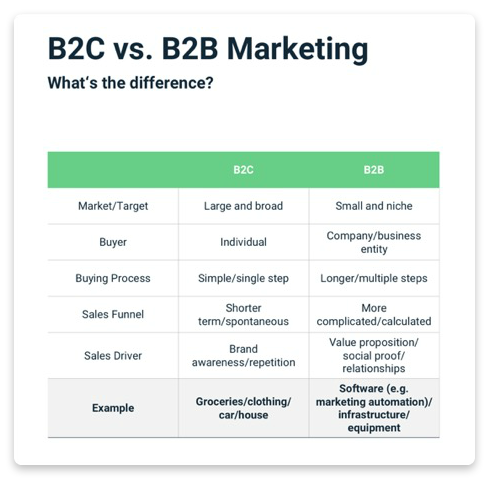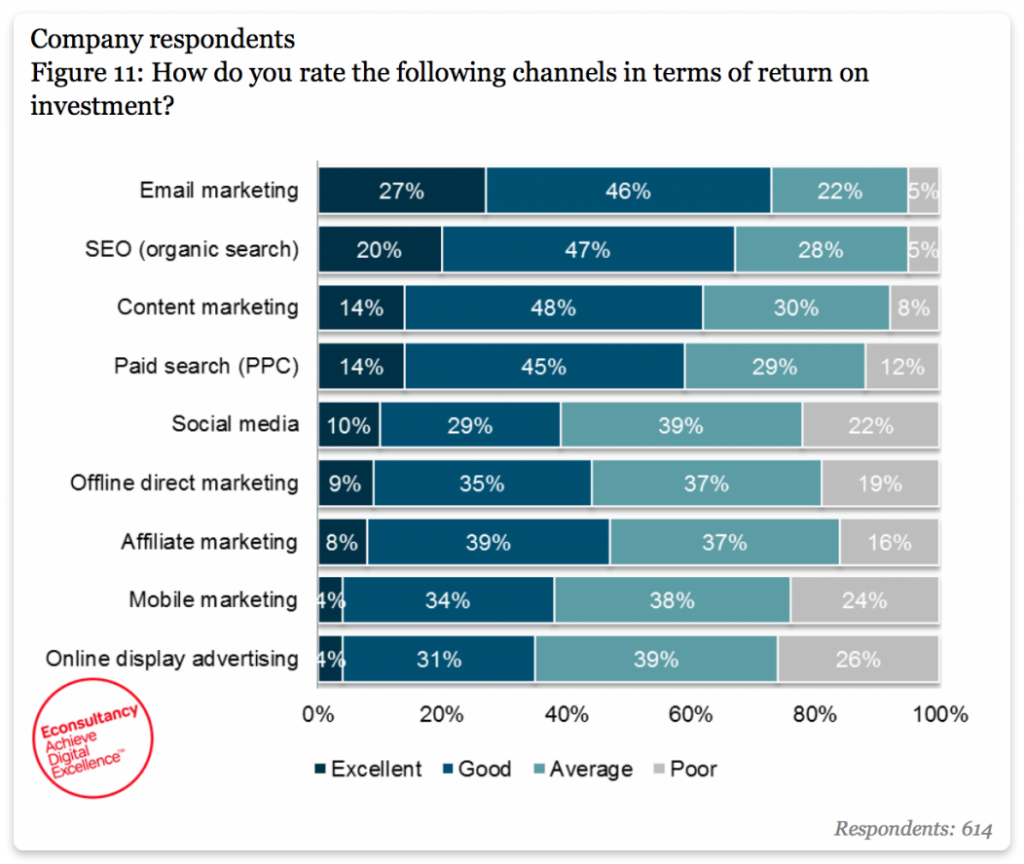Business-to-consumer (B2C)
B2C (or B-to-C) stands for business-to-consumer and describes a commercial transaction between a company and an individual customer who is also the final consumer. This type of business relationship is viewed in contrast to business relationships between companies – B2B (business-to-business).
We’re all familiar with B2C: an example of a B2C business would be a company that manufactures leather goods and does not sell its products to wholesalers or other retailers, but instead sells them directly to the end consumer through brick-and-mortar stores or online shops. The transaction here takes place between the business and the consumer. It is not uncommon for one company to practice both B2C and B2B sales.
The difference between B2C and B2B marketing
The type of business – B2B or B2C – affects the company’s marketing and sales strategies, if only because individual customers are approached in a different way than companies, where there’s usually more than one person involved in the decision-making process.

Targeted marketing techniques, brand building, and emotional approach are techniques traditional to B2C marketing: an emotional charge can be particularly effective here since individual consumers are usually less fixated on rational arguments and logic than companies.
B2C marketing and sales
Your B2C marketing and sales strategies are likely to start with customer and market analysis and cover the following points:
- define your goals
- create a buyer persona
- choose your best-performing marketing channels
- analyze your sales funnel
B2C goals
The goals of B2C marketing include:
- Generating leads
- Building brand awareness
- Driving sales
- Improving engagement
- Creating brand evangelists
- Raising customer retention and loyalty, as well as CLV
These goals are achieved through a variety of channels (some working better than others depending on your product niche).
B2C marketing channels
When choosing which marketing channel to invest in, it’s important to analyze which one brings in the highest ROI. According to Econsultancy, these are the marketing channels delivering the highest ROI in B2C:

As you can see, email marketing has the highest ROI, and has long been the channel of choice for both B2C and B2B businesses, along with SEO and content marketing.
SEO
SEO (search engine optimization) helps achieve multiple goals – generating leads and improving brand awareness to begin with. In basic terms, SEO makes you rank higher in search results, automatically putting you in the top choices of the potential customers searching for a solution or product like yours. Developing useful SEO-optimized content is one of the ways to rank higher in your niche.
Content marketing
Content is a great marketing strategy that helps with every single B2C marketing goal we’ve listed above. It’s important to remember that the content you create will also depend on which stage of the buyer’s journey your lead is on – awareness, consideration, or decision. There are endless possibilities for content in the B2C niche – but there are types that perform better than the rest:
- Lists of tips or hacks
- How-Tos
- Insights and behind the scenes
- News and announcements
- Case studies and customer reports
These can take the form of articles, interactive online pages, social media posts, videos, etc. The choice will depend on which platforms work best for your business.
Email marketing
Email marketing in the business-to-consumer niche helps build and expand branding, works great for direct sales and is used as a supporting or primary marketing channel.
A big advantage of B2C email marketing is that consumers are addressed directly, which leads to a shorter sales cycle. For this, you must know your target group very precisely.
Design also plays a major role in B2C email marketing campaigns. Any mailings, especially newsletter templates, should have a high recognition value and be created according to the corporate design of the brand. This contributes to strengthening the brand.
Sending times and email frequency are also some of the crucial differences between B2B and B2C email marketing. In general, for B2B you want to send in the working hours, when the recipient is most ready to consider your offer (~11am). For B2C, the most common strategy is the complete opposite – finding the recipient when they’re free and preferably bored. The frequency of mailings usually depends on your product niche, what you have to offer, and the subscription frequency the recipient has chosen themselves.
It’s also important to remember that one of the easiest ways to improve email marketing KPIs is working on the campaign’s segmentation and personalization.
All in all
To succeed in B2C sales and marketing, you need to define exact goals, adapt your content and email marketing to the relevant target groups and always consider the buyer’s journey.
Customers in B2C anticipate a large number of potential purchasing opportunities and often make purchasing decisions based on emotions, as opposed to B2B leads. Choose the marketing channels that are perfect for your product niche, and start converting.















